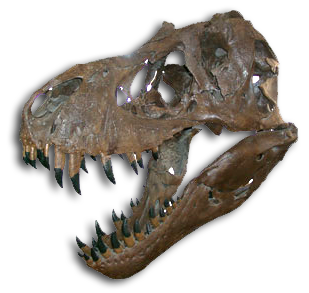Item Number
1735
Type
image
Description
Stromatolite Slab
Size
15
Age
Precambrian, Proterozoic, Paleoproterozoic
SciId
Stramatolite
Status
in inventory
Display/Storage
Display
Building
Zuhl Museum
Original Site
Columbia
Date Acquired
2015
Source
JNE Lapidary Inc.
Gallery/Room\Floor
History of Life Gallery
Notes
Paleoproterozoic was the first era of the Proterozoic eon (2.5 billion to 541 million years ago).Stromatolites are layered mounds, columns, and sheet-like sedimentary rocks. They were originally formed by the growth of layer upon layer of cyanobacteria, a single-celled photosynthesizing microbe that lives today in a wide range of environments ranging from the shallow shelf to lakes, rivers, and even soils. Fossilized stromatolites provide ancient records of life on Earth by these remains, some of which date from more than 3.5 billion years ago. Stromatolites are still forming on earth today. Cyanobacteria were ultimately responsible for one of the most important global changes that the Earth has undergone. Being photosynthetic, cyanobacteria produce oxygen as a by-product. As stromatolites became more common 2.5 billion years ago, they gradually changed the Earth's atmosphere from a carbon dioxide-rich mixture to the present-day oxygen-rich atmosphere.
Preview

Description
Paleoproterozoic was the first era of the Proterozoic eon (2.5 billion to 541 million years ago).Stromatolites are layered mounds, columns, and sheet-like sedimentary rocks. They were originally formed by the growth of layer upon layer of cyanobacteria, a single-celled photosynthesizing microbe that lives today in a wide range of environments ranging from the shallow shelf to lakes, rivers, and even soils. Fossilized stromatolites provide ancient records of life on Earth by these remains, some of which date from more than 3.5 billion years ago. Stromatolites are still forming on earth today. Cyanobacteria were ultimately responsible for one of the most important global changes that the Earth has undergone. Being photosynthetic, cyanobacteria produce oxygen as a by-product. As stromatolites became more common 2.5 billion years ago, they gradually changed the Earth's atmosphere from a carbon dioxide-rich mixture to the present-day oxygen-rich atmosphere. 9
Keywords
Stromatolite Slab Paleoproterozoic was the first era of the Proterozoic eon (2.5 billion to 541 million years ago).Stromatolites are layered mounds, columns, and sheet-like sedimentary rocks. They were originally formed by the growth of layer upon layer of cyanobacteria, a single-celled photosynthesizing microbe that lives today in a wide range of environments ranging from the shallow shelf to lakes, rivers, and even soils. Fossilized stromatolites provide ancient records of life on Earth by these remains, some of which date from more than 3.5 billion years ago. Stromatolites are still forming on earth today. Cyanobacteria were ultimately responsible for one of the most important global changes that the Earth has undergone. Being photosynthetic, cyanobacteria produce oxygen as a by-product. As stromatolites became more common 2.5 billion years ago, they gradually changed the Earth's atmosphere from a carbon dioxide-rich mixture to the present-day oxygen-rich atmosphere. 2015 Precambrian, Proterozoic, Paleoproterozoic Fossil
Keywords
Stromatolite Slab Paleoproterozoic was the first era of the Proterozoic eon (2.5 billion to 541 million years ago).Stromatolites are layered mounds, columns, and sheet-like sedimentary rocks. They were originally formed by the growth of layer upon layer of cyanobacteria, a single-celled photosynthesizing microbe that lives today in a wide range of environments ranging from the shallow shelf to lakes, rivers, and even soils. Fossilized stromatolites provide ancient records of life on Earth by these remains, some of which date from more than 3.5 billion years ago. Stromatolites are still forming on earth today. Cyanobacteria were ultimately responsible for one of the most important global changes that the Earth has undergone. Being photosynthetic, cyanobacteria produce oxygen as a by-product. As stromatolites became more common 2.5 billion years ago, they gradually changed the Earth's atmosphere from a carbon dioxide-rich mixture to the present-day oxygen-rich atmosphere. 2015 Precambrian, Proterozoic, Paleoproterozoic Fossil


